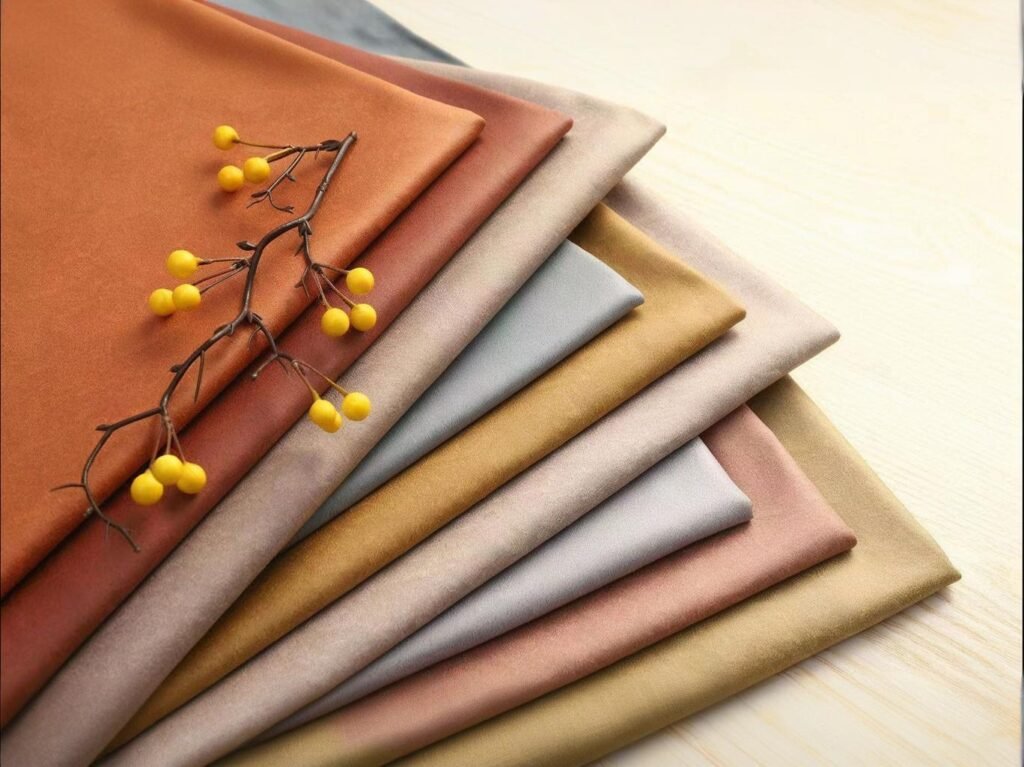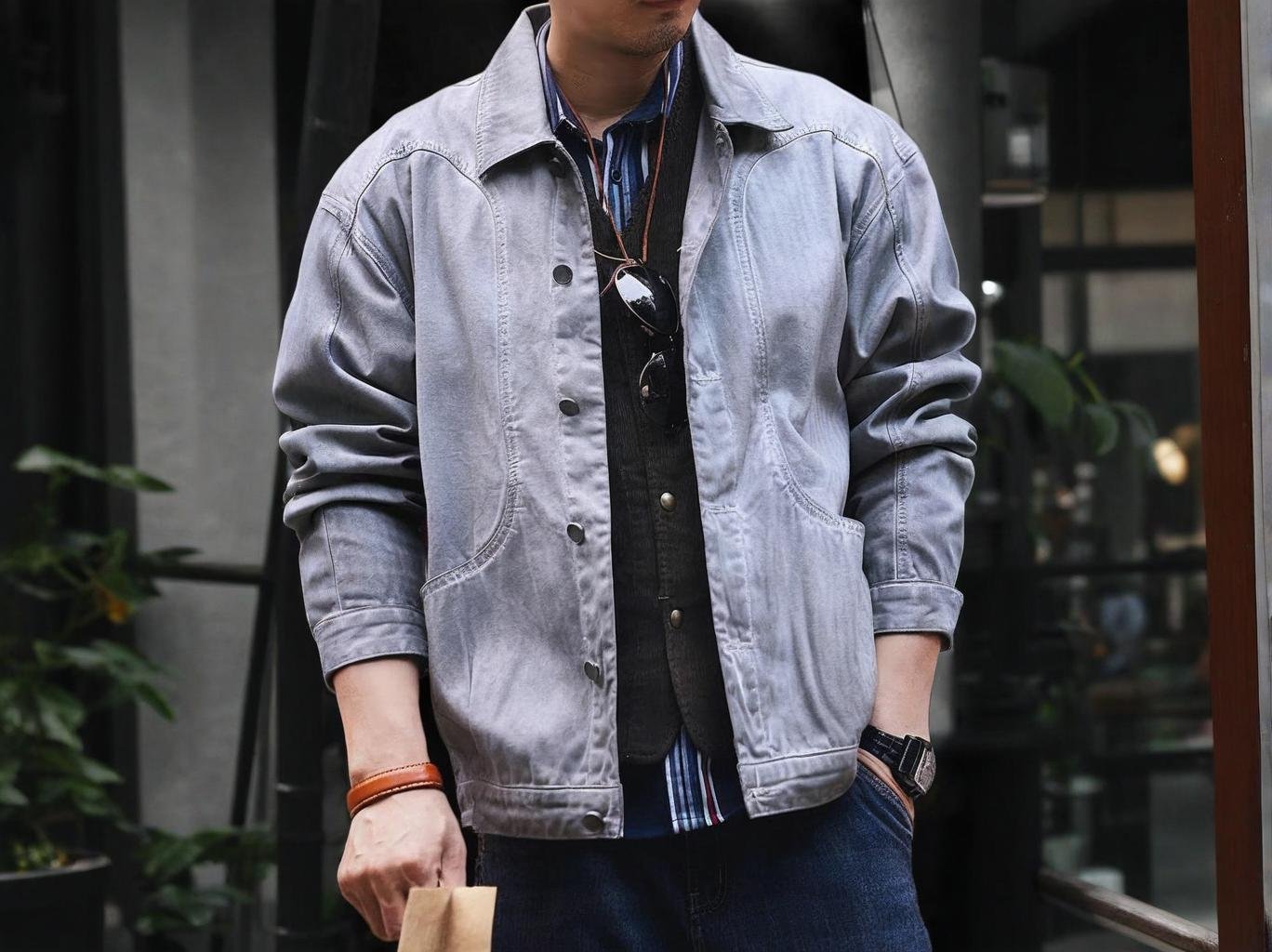Polyester Fiber: Cost Efficiency in Large-Scale Fabric Production

In an industry where cents per meter can define margins, fabric manufacturers constantly seek fibers that balance price, performance, and processability. Among various textile materials, polyester stands out not only for its versatility and strength but also for its impressive cost efficiency in high-volume production settings.
Polyester fiber offers unmatched cost efficiency in large-scale fabric production due to its low raw material price, high productivity in spinning and weaving, energy-saving processes, minimal waste, and recyclability. These factors make it a strategic material for manufacturers focused on scalable output and price competitiveness.
Consider this: a vertically integrated mill in Vietnam reduced fabric costs by 23% after shifting from cotton to polyester for several core SKUs. The change didn’t just save on raw materials—it improved machine uptime, reduced waste by 15%, and shortened lead times by 20%. This story isn’t unique—it’s happening across the global textile map. Let’s unpack the reasons why.
1. What are the core cost advantages of polyester fiber compared to natural fibers?
Polyester fiber’s synthetic origin ensures price stability, lower per-kilogram costs, and fewer quality inconsistencies than natural fibers. Its strength, durability, and low moisture absorption also translate into higher process efficiency and fewer defects during production, ultimately lowering the total cost of fabric per meter.
Material Pricing and Global Availability
- Polyester Staple Fiber (PSF): Averages $0.90–$1.20/kg globally, significantly cheaper than cotton (typically $1.50–$2.00/kg).
- Supply Stability: Made from petroleum-based feedstocks like PTA and MEG, polyester benefits from global petrochemical infrastructure—less susceptible to climate or crop cycles.
| Fiber Type | Avg Global Price (2024–2025) | Major Cost Drivers |
|---|---|---|
| Polyester | $0.95/kg | Crude oil, ethylene glycol |
| Cotton | $1.75/kg | Weather, land use, harvesting |
| Viscose | $1.60/kg | Pulp supply, chemical treatment |
Moisture Regain and Yield Efficiency
- Polyester’s moisture regain is <1%, whereas cotton’s is 7–8%, meaning you get more usable fiber per kilogram in polyester.
- Example: 1,000 kg of polyester yields nearly 1,000 kg usable fiber; 1,000 kg of cotton gives ~925 kg after accounting for moisture.
Labor and Processing Gains
- Fewer imperfections (knots, slubs) in polyester means fewer machine stops during spinning and weaving.
- Longer filament lengths require less carding and combing, reducing machinery load and energy use.
Critical Perspective While polyester wins on price and yield, it’s not a blanket replacement. Applications that demand superior softness, breathability, or environmental marketing claims may still justify the premium cost of natural fibers. But from a purely cost-centered view, polyester’s controlled production and chemical stability give it the upper hand.
2. How does polyester perform in high-volume spinning and weaving processes?
Polyester is engineered for productivity. Its uniform filament structure enables higher spindle speeds, fewer breakages, and reduced downtime. In weaving, polyester yarns maintain tension better and allow for denser, faster production runs without excessive maintenance. These advantages significantly cut per‑unit production time in large-scale mills.
Spinning Efficiency
- Polyester Filament Yarn (PFY): Supports high-speed rotor spinning at over 120,000 RPM—up to 20% faster than cotton ring spinning.
- Staple Fiber Blends: Easily spun on both OE and ring systems, offering flexibility in yarn construction (core-spun, slub, textured).
| Spinning Type | Fiber Input | Avg Output (kg/day/spindle) | Downtime Rate (%) |
|---|---|---|---|
| Ring Spinning | Cotton | 20–25 | 10–15 |
| Rotor (OE) Spinning | Polyester | 35–40 | 5–8 |
| Air-Jet Spinning | Polyester/Cotton | 30–35 | 6–9 |
Weaving Efficiency
- Polyester yarns have greater tensile strength and lower elongation variance, reducing warp breakage and loom stoppages.
- Air-jet looms can operate more efficiently with polyester warps, which are smoother and less prone to hairiness than cotton.
Fabric Width Utilization & Shrinkage Control
- Polyester exhibits minimal width shrinkage in greige and finished states—critical for maintaining usable width in dyeing/finishing.
- Lower fabric shrinkage (≤2%) allows tighter nesting and better yield during garment cutting.
Real-World Example: A Bangladesh mill increased daily output on air-jet looms from 1,800 meters (cotton) to 2,200 meters (polyester) without adding shift hours—simply by switching warp material and adjusting loom tension parameters.
Critical Perspective Speed and uptime are crucial in high-capacity operations. Polyester’s dimensional stability and consistent performance reduce idle machine time and labor interventions. That said, careful monitoring of heat setting and tension profiles is essential to avoid synthetic fiber defects like curling, melting, or static buildup.
3. Which factors influence the price stability of polyester in bulk textile production?
Polyester fiber pricing is generally more stable than natural fibers due to its petrochemical origin and globally integrated supply chains. Unlike cotton, which is highly sensitive to weather events and global planting cycles, polyester derives from relatively predictable petroleum and natural gas markets. Price fluctuations do occur, but they’re often tied to macro oil trends or logistics bottlenecks rather than volatile seasonal yields.
Key Price Drivers of Polyester
- Feedstock Costs: Polyester is synthesized from PTA (Purified Terephthalic Acid) and MEG (Monoethylene Glycol), both petrochemical derivatives.
- Crude Oil Dependency: Though polyester prices correlate with crude oil, the relationship is not 1:1 due to long-term contracts, refinery buffer stocks, and regional overcapacity.
- China’s Market Role: As the largest global producer, China’s polyester capacity and export policies heavily influence global prices—its supply surplus keeps polyester prices relatively competitive.
| Year | Polyester Avg Price (USD/kg) | Cotton Avg Price (USD/kg) | Global Crude (USD/barrel) |
|---|---|---|---|
| 2020 | 0.88 | 1.65 | 41.9 |
| 2022 | 1.02 | 2.00 | 94.5 |
| 2024 (Est.) | 0.96 | 1.72 | 78.4 |
Impact of Logistics and Tariffs
- Polyester is easier to stockpile than natural fibers due to lower storage loss and fewer moisture issues.
- Import duties on cotton in some regions (e.g., India, EU) can make polyester more competitive despite global freight fluctuations.
Risk Factors to Watch
- Environmental regulations on refinery emissions or polyester production processes could drive future cost increases.
- Recycling mandates in Europe or North America may push demand toward more expensive rPET unless scaled production reduces those costs.
Critical Perspective While polyester offers strong price stability in the short-to-mid term, long-term cost planning should include regulatory trends around fossil-derived materials. Forward-thinking mills mitigate risks by integrating recycled polyester streams or pre-contracting raw material at fixed rates—preserving margins even during external shocks.
4. Do polyester fabrics reduce waste and defect rates during manufacturing?
Yes—polyester’s structural consistency leads to significantly lower material waste, defect rates, and machine stoppages. It experiences fewer yarn breakages during spinning and weaving, maintains dimensional stability during finishing, and resists fraying and pilling throughout the cut-make-trim (CMT) process. These properties reduce seconds (defective goods), remakes, and off-cut waste in apparel and home textile production.
Common Waste Points in Fabric Manufacturing
- Spinning Waste: Cotton fibers generate neps, fly, and short fibers; polyester generates minimal waste due to longer, more uniform filaments.
- Weaving Waste: Polyester reduces warp and weft tension issues, cutting loom downtime and fabric starts.
- Finishing Shrinkage: Cotton loses 5–10% in width after finishing; polyester typically <2%, which increases usable yardage.
| Process Stage | Cotton Waste (%) | Polyester Waste (%) | Comments |
|---|---|---|---|
| Spinning | 8–12 | 3–5 | Fly, short fibers common in cotton |
| Weaving (loom loss) | 4–6 | 2–3 | Polyester runs longer without stoppage |
| Finishing (shrinkage) | 5–10 | <2 | Polyester more stable under heat |
| Cutting Table Waste | 7–9 | 4–6 | Polyester roll width more consistent |
Case Example: A Malaysian apparel factory using 100% cotton reported a defect rate of 6.3% on finished garments (fabric pilling, shrinkage mismatch, cut size variation). After moving to a 100% polyester blend for uniforms, defects dropped to 2.1% over six months, saving over $45,000 in remake labor and materials.
Fabric Consistency and Colorfastness
- Polyester’s low dye variability (due to disperse dyeing method and controlled fiber conditions) also reduces batch rejections.
- Its resistance to moisture means storage or transport issues (mildew, dye bleeding) are virtually eliminated compared to cotton.
Critical Perspective Waste isn’t just a material issue—it affects labor, energy, compliance, and production speed. Polyester’s mechanical consistency cuts errors across all stages. However, poorly processed polyester can suffer from streaking or thermal distortion, so mills must monitor heat-setting and dye uniformity with discipline.
5. How energy-efficient is polyester production compared to cotton or viscose?
Polyester production is more energy-intensive than cotton at the fiber creation stage but becomes more efficient during downstream processing like spinning, dyeing, and finishing. Viscose, on the other hand, consumes significant energy and water across both fiber production and chemical treatment phases. When considering the full production cycle—from polymerization or farming to finished fabric—polyester often provides better energy-per-meter efficiency in high-speed manufacturing environments.
Fiber Production Energy Use
- Polyester: Produced via melt spinning, requiring high initial energy for polymerization but yielding filament yarns that need minimal post-processing.
- Cotton: Grown over months, harvested, ginned, spun, dyed—each stage being lower energy per step but collectively high due to agricultural inefficiencies.
- Viscose: Requires heavy chemical processing (e.g., sodium hydroxide, carbon disulfide), consuming more energy and generating higher effluent loads.
| Fiber Type | Fiber Production Energy (MJ/kg) | Water Use (L/kg) | Post-Processing Efficiency |
|---|---|---|---|
| Polyester | 125–140 | ~62 | High (melt-spun, low dye rework) |
| Cotton | 55–60 | 7,000–10,000 | Medium (variable batch dyeing) |
| Viscose | 80–100 | 1,500–3,000 | Low (high chemical management) |
Processing and Finishing Energy Savings
- Drying Time: Polyester dries up to 40% faster than cotton, saving energy during tumble drying and calendaring.
- Heat Setting: While polyester requires heat setting to stabilize dimensionally (~180–200°C), once set, it maintains shape, reducing rework.
- Continuous Dyeing: Polyester’s dye process (disperse dyeing) works best in continuous lines—ideal for mass production with minimized water and energy per meter.
Case Example: A Turkish mill replaced cotton sheeting lines with polyester blends. Although polymer production consumed more energy, overall plant efficiency rose by 18%, and energy per finished meter dropped by 11% due to quicker drying and lower defect rates.
Critical Perspective The key energy gains with polyester come after the fiber is produced. For mass manufacturers with energy recovery systems and modern dyeing lines, polyester offers long-term savings. However, mills relying on low-tech batch systems may not realize these benefits unless they upgrade machinery.
6. What role does polyester recycling play in reducing raw material costs?
Recycled polyester (rPET), primarily sourced from post-consumer PET bottles, offers an increasingly competitive price advantage while lowering environmental impact. As global demand for sustainable materials grows, rPET enables manufacturers to tap into tax incentives, meet brand sustainability targets, and reduce dependency on virgin petrochemicals—all while achieving up to 10–20% cost savings in fiber procurement under the right sourcing structure.
rPET Market Overview
- Feedstock Source: Used PET bottles (e.g., water bottles), collected, cleaned, and melted into chips for spinning.
- Cost Competitiveness: rPET fiber prices range from $1.05–$1.25/kg—often similar or slightly lower than virgin polyester, especially in regions with established recycling infrastructure (e.g., China, India, EU).
| Material Type | Avg Global Price (2025) | Feedstock Origin | Carbon Savings vs Virgin |
|---|---|---|---|
| Virgin Polyester | $0.95–$1.15/kg | Petrochemical (PTA) | Baseline |
| rPET Staple Fiber | $1.05–$1.25/kg | PET bottle flakes | –35% to –45% |
| Recycled Cotton | $1.80–$2.30/kg | Post-industry waste | –25% |
Operational Advantages
- Brand Value: Fashion and home textile brands are increasingly setting recycled content goals (e.g., 50% rPET by 2030).
- Tax & Tariff Benefits: Some countries offer import duty reductions or carbon tax relief for documented use of recycled materials.
Production Considerations
- rPET may require filtration and extra drying to remove contaminants before spinning.
- Yarns made from rPET can sometimes have slightly lower tensile strength—requiring careful quality control during blending and warping.
Real-World Example: A mill in Zhejiang shifted 60% of their warp yarn to rPET and reduced raw material costs by 12% while achieving compliance with EU Ecolabel regulations. The switch also enabled them to pitch products under GRS (Global Recycled Standard) certifications, increasing buyer interest.
Critical Perspective Recycled polyester is not a free pass—it still depends on petrochemistry and energy-intensive processing. However, it represents a valuable cost-efficiency and compliance solution for manufacturers aiming to future-proof their supply chain against raw material volatility and environmental regulation.
7. Are there cost-benefit trade-offs between virgin and recycled polyester for manufacturers?
Yes—while recycled polyester (rPET) offers branding advantages and potential cost savings under certain conditions, it can present trade-offs in processing consistency, mechanical properties, and sourcing complexity. Virgin polyester tends to offer more predictable quality and broader availability, but growing demand for sustainable alternatives and environmental regulations is closing the gap in both performance and economics.
Performance Differences
- Tensile Strength: Virgin polyester generally has higher filament strength and smoother surfaces. rPET can have slightly reduced strength due to polymer chain degradation during the recycling process.
- Dye Affinity: Virgin polyester offers better dye uptake and shade consistency. rPET may require additional carrier agents or batch corrections.
- Contaminants & Processing: rPET fibers sometimes contain trace residues or color impurities, leading to stricter quality control requirements and sometimes lower yield rates.
| Characteristic | Virgin Polyester | Recycled Polyester (rPET) |
|---|---|---|
| Filament Strength | High | Medium to High |
| Color Consistency | Excellent | Moderate (requires QC) |
| Cost per kg (avg) | $0.95–$1.15 | $1.05–$1.25 |
| Availability | Global, consistent | Region-dependent |
| Environmental Impact | High carbon footprint | –30% to –50% CO₂ savings |
Cost & Brand Trade-offs
- Brand Premiums: Garments or fabrics made with rPET can command 10–20% price premiums in eco-conscious markets (especially EU and North America).
- Certifications: GRS, OEKO-TEX® STeP, and Bluesign certifications add value but also incur costs for audits and compliance processes.
- MOQ & Sourcing Complexity: rPET may have higher MOQs (e.g., 500–1,000 kg per color) and limited availability in certain colors due to feedstock inconsistency.
Case Example: A Mexican activewear manufacturer blended 80% rPET with 20% virgin polyester for performance leggings. While dye consistency required an extra QC step, the product qualified for “Green Label” certification and secured a contract with a European retailer, increasing total revenue by 14% despite slightly higher base costs.
Critical Perspective There’s no one-size-fits-all answer. Virgin polyester offers leaner, high-speed processing with minimal technical interruptions—ideal for fast fashion or commodity textiles. Recycled polyester, though sometimes less consistent, opens doors to premium markets and longer-term environmental compliance. Many manufacturers now mix both to balance cost efficiency and sustainability.
8. How do MOQ, lead time, and logistics impact polyester’s cost-efficiency in global supply chains?
Polyester’s synthetic nature and industrial production allow for tighter MOQ control, shorter lead times, and more flexible logistics planning compared to natural fibers. This makes it a more agile option for high-volume and just-in-time production models. In contrast, cotton and other natural fibers are subject to agricultural delays, inconsistent bale quality, and more complex logistics due to climate and geopolitical conditions.
MOQ Flexibility
- Polyester is produced in industrial reactors and spun continuously, which allows for batch-specific MOQ tailoring (as low as 300–500 kg in China and Southeast Asia).
- Many polyester suppliers offer “fast track” SKUs or greige goods with color-on-demand options, enabling faster sampling and production starts.
Lead Time Advantages
- Virgin Polyester: 2–4 weeks from yarn spinning to finished greige fabric.
- Cotton (comparable spec): 5–7 weeks including ginning, spinning, and batching.
- Recycled Polyester: May add 1 week if feedstock processing is off-site.
| Material Type | Typical MOQ (kg) | Lead Time (Greige to Ready Fabric) | Color Lead Time |
|---|---|---|---|
| Virgin Polyester | 300–500 | 3–4 weeks | 5–7 days |
| Recycled Polyester | 500–1,000 | 4–5 weeks | 7–10 days |
| Cotton | 800–1,200 | 6–7 weeks | 10–14 days |
Logistics Resilience
- Polyester’s low moisture regain (<1%) simplifies warehousing and reduces transit spoilage.
- Compressed bale volume means higher container density—polyester ships more meters per CBM than cotton, cutting freight costs by 10–15%.
Real-World Example: A Korean manufacturer switched from cotton to polyester for their seasonal home textile line and cut air freight cost per CBM by 12%. Faster lead times also allowed two additional product refreshes per year, boosting annual sales by 18%.
Critical Perspective Polyester excels in logistics and inventory management—but planning is key. For brands with fast-changing designs and global demand, the fiber’s speed and storage advantages offer real economic value. However, choosing the right supplier with dyehouse capacity and reliable delivery infrastructure is critical to unlocking this efficiency.
Polyester’s cost efficiency in large-scale fabric production is no accident—it’s a result of high raw material yield, energy-smart manufacturing, machine compatibility, low defect rates, and superior logistics handling. Whether choosing virgin or recycled variants, polyester empowers fabric developers and manufacturers to optimize margins without compromising on quality or delivery.
Looking to develop your own polyester-based fabric with fast lead time, low MOQ, and guaranteed performance? Contact SzoneierFabrics for professional guidance, free sampling, and customized bulk solutions that meet your market needs.
Let’s turn cost efficiency into your next competitive edge.
polyester fiber cost efficiency, polyester vs cotton manufacturing cost, large-scale fabric production, recycled polyester fabric cost, polyester fabric MOQ, polyester fiber price trend, polyester fabric lead time, virgin vs recycled polyester, polyester spinning efficiency, polyester weaving performance, polyester fabric waste reduction, polyester energy consumption, polyester vs cotton lifecycle cost, polyester fabric defect rate, polyester textile logistics, polyester in mass production, polyester fabric price per meter, polyester yarn productivity, rPET fiber advantages, cost-effective fabric materials, polyester vs viscose comparison, polyester for uniform manufacturing, industrial polyester fabric sourcing, low MOQ polyester suppliers, sustainable polyester fabrics, GRS certified polyester, polyester supply chain optimization, polyester for fast fashion, polyester textile manufacturing process, high-yield textile fibers
Can't find the answers?
No worries, please contact us and we will answer all the questions you have during the whole process of bag customization.
Make A Sample First?
If you have your own artwork, logo design files, or just an idea,please provide details about your project requirements, including preferred fabric, color, and customization options,we’re excited to assist you in bringing your bespoke bag designs to life through our sample production process.



